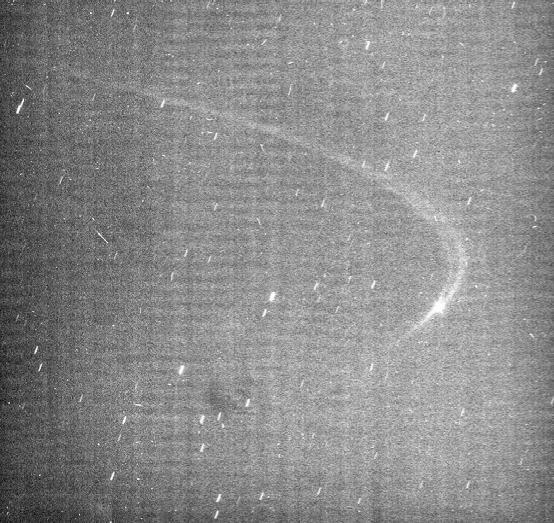Anthe

Discovery
The Cassini Imaging team discovered Anthe on May 30, 2007, although a check back revealed Anthe in Cassini images as early as June 2004. Anthe is the 60th confirmed moon of Saturn.
Overview
Anthe is a tiny moon with a mean radius of 0.6 miles (0.9 kilometers) that orbits between Mimas and Enceladus about 122,800 miles (197,700 kilometers) from Saturn. Anthe and two other tiny moons, Methone and Pallene, may have split from either Mimas or Enceladus, or all five moons may be the remains of a larger swarm that traveled in that area close to Saturn. Anthe circles Saturn in approximately 25 hours.
Because these three tiny moons orbit at very similar distances from Saturn, they are in a dynamical relationship. Mimas strongly perturbs the tiny moons Methone, Pallene, and Anthe, all of which orbit between Mimas and the next major moon, Enceladus. The vastly more massive Mimas has the greatest effect on Anthe, causing the Methone orbit to vary by as much as 12.4 miles (20 kilometers), and has a slightly smaller effect on Pallene.
Together, these three moons may also be contributing particles to Saturn's E ring. Material blasted off Anthe by micrometeoroid impacts is believed to the source of the Anthe Ring Arc, a faint partial ring arout Saturn that is co-orbital with the moon first detected in June 2007.
As a consequence of its small size and recent discovery, astronomers have few details on the characteristics of Anthe and its neighbors Methone and Pallene, such as reflectivity (called albedo), rotation (probably tidally locked on Saturn because they are so close), and composition.
How Anthe Got its Name
John Herschel suggested that the moons of Saturn be associated with the mythical brothers and sisters of Kronus. (In Greek mythology, Kronus is the equivalent of the Roman god Saturn.) The International Astronomical Union now controls the official naming of astronomical bodies.
The name Anthe comes from the name in Greek mythology of one of seven Alkyonides—daughters of the god (or Titan) Alkyoneus. Alkyoneus sprang from Gaea and the blood of Uranus. This blood was spilled when Uranus' son—and Alkyoneus' brother—Kronus castrated his father. Herakles (Hercules) killed Alkyoneus in the war between the gods of Mount Olympus and the Titans. Overcome by grief, the daughters threw themselves into the sea to die, but the goddess Amphitrite took pity on them and transformed them into halcyons or kingfishers.
Astronomers also refer to Anthe as Saturn XLIX, and before it was confirmed, it was known as S/2007 S4.




